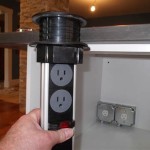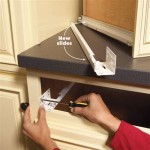Replacing a kitchen sink is a common project for many homeowners. It can be a daunting task, but with the right information and preparation, it can be a relatively straightforward job. This guide will provide you with the steps you need to take to successfully replace your kitchen sink. Whether you’re replacing an existing sink or installing a new one, this guide will set you up for success.
Choose Your Replacement Sink
The first step in replacing your kitchen sink is to choose the right sink for your needs. Consider factors such as size, material, and installation type when selecting your new sink. Stainless steel is a popular choice for kitchen sinks, as it is durable, easy to clean, and relatively inexpensive. However, there are other materials to choose from such as cast iron, granite, and even solid surface sinks.
Installation type is also important. You can choose between drop-in, undermount, and farmhouse style sinks. Each of these has different installation requirements, so make sure you understand how to install the type you choose.
Gather the Tools and Supplies You Need
Once you’ve chosen the right sink for your needs, it’s time to gather the tools and supplies you’ll need for the installation. You’ll need a basin wrench, a putty knife, a caulk gun, silicone sealant, and a hole saw for drilling holes in the countertop. You may also need a hacksaw for cutting the sink to size. Make sure you have all the necessary tools and supplies before you begin the installation.
Remove the Old Sink
The next step is to remove the old sink. Begin by turning off the water supply and disconnecting the drainage pipes. Then, use a basin wrench to remove the nuts that hold the sink to the countertop. Once the nuts are removed, you should be able to lift the old sink out. If there is any remaining silicone sealant or caulk, use a putty knife to remove it.
Install the New Sink
Now that the old sink is out, you’re ready to install the new one. Place the new sink in the opening, making sure it is properly aligned. Use a caulk gun to apply the silicone sealant around the edges of the sink. Then, use the basin wrench to reattach the nuts to the underside of the countertop. Once the nuts are in place, you’re ready to connect the water supply and drainage pipes.
Test the Sink and Put Everything Back Together
The final step is to test the sink to make sure it is properly installed. Turn on the water supply and check for any leaks. Then, put everything back together. Put the faucet in place and connect the water supply and drainage pipes. Once the faucet is connected, your new sink is ready to use.















Related Posts








